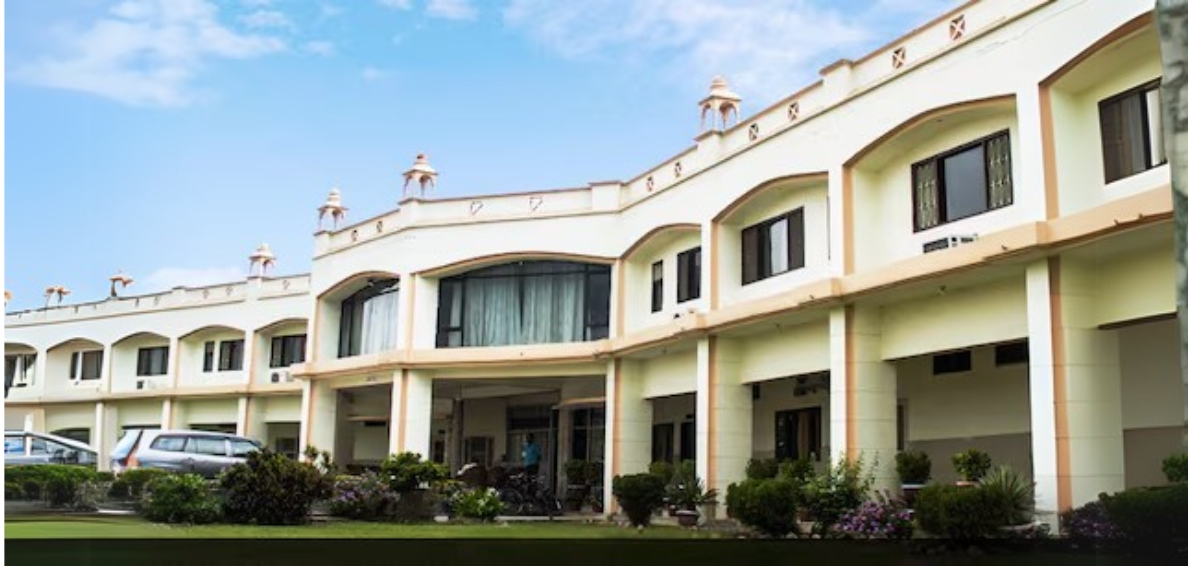- Courses
- GS Full Course 1 Year
- GS Full Course 2 Year
- GS Full Course 3 Year
- GS Full Course Till Selection
- Answer Alpha: Mains 2025 Mentorship
- MEP (Mains Enrichment Programme) Data, Facts
- Essay Target – 150+ Marks
- Online Program
- GS Recorded Course
- Polity
- Geography
- Economy
- Ancient, Medieval and Art & Culture AMAC
- Modern India, Post Independence & World History
- Environment
- Governance
- Science & Technology
- International Relations and Internal Security
- Disaster Management
- Ethics
- NCERT Current Affairs
- Indian Society and Social Issue
- NCERT- Science and Technology
- NCERT - Geography
- NCERT - Ancient History
- NCERT- World History
- NCERT Modern History
- CSAT
- 5 LAYERED ARJUNA Mentorship
- Public Administration Optional
- ABOUT US
- OUR TOPPERS
- TEST SERIES
- FREE STUDY MATERIAL
- VIDEOS
- CONTACT US
Ram Katha Museum Project in Ayodhya
Ram Katha Museum Project in Ayodhya

- In addition to the recently inaugurated Ram Mandir, Ayodhya is set to see the development of another major project—the Ram Katha Museum In January 2025.
- The museum will highlight the life, legacy, and history of Lord Ram and the movement that led to the Ram Mandir.
- It will combine history, spirituality, and modern technology, making it an important cultural site.
Key Facts:
-
Location and Size:
- The Ram Katha Museum will be located in the former archives building about 4 km from the Ram Mandir site.
- The museum will cover an area of 40,000 square feet, making it the second-largest attraction in Ayodhya after the Ram Mandir.
-
Ownership and Funding:
- The building where the museum will be set up is owned by the state government.
- The Ram Mandir Trust will finance the project.
- The project is expected to be completed in two years, with the design and final plans still being prepared.
-
Museum Focus:
- The Ram Katha Museum will focus on:
- Historical and Archaeological Evidence: Displaying items found during excavations at the Ram Mandir site that show the ancient roots of the temple.
- Ramayana: Offering visitors a deeper understanding of Lord Ram’s life and the key events in the Ramayana.
- Ram Temple Movement: Documenting the 200-year-long effort to build the Ram Mandir in Ayodhya.
- The Ram Katha Museum will focus on:
-
Technological Features:
- The museum will use Augmented Reality (AR), Virtual Reality (VR), and Artificial Intelligence (AI) to create an interactive and engaging experience for visitors.
- A hyper-realistic statue of Lord Ram will be one of the major attractions, showing Lord Ram’s detailed movements and even speaking to visitors.
|
Feature |
Augmented Reality (AR) |
Virtual Reality (VR) |
|
What it does |
Adds digital elements to the real world. |
Creates a completely virtual world. |
|
User Experience |
You see both the real world and digital objects. |
You only see a virtual world. |
|
Equipment |
Smartphone, tablet, or AR glasses. |
VR headset and sometimes controllers. |
|
Example |
Snapchat filters, Google Maps directions. |
VR games, virtual tours, simulations. |
|
Immersion |
Partial immersion (real world + virtual). |
Full immersion (entirely virtual). |
- Key Sections of the Museum: The museum will have three floors—Lower Ground, Ground, and First—and will feature 26 sections with different themes related to Lord Ram’s life. Some of the major sections include:
- Introductory Segment: An overview of what the museum offers.
- Ram Darbar: A holographic show depicting Lord Ram’s royal court.
- Ikshwaku Vanshavali: The family tree of Lord Ram, showing his ancestors.
- Sabke Ram: Various stories of Lord Ram’s life.
- Ram Katha in Different Countries: How the Ramayana has influenced different cultures around the world.
- Ram Van Path: A path decorated with pictures of places Lord Ram visited during his exile.
- Maharshi Valmiki’s Holobox: Interactive 3D displays telling the story of the Ramayana and Yog Vasistha.
- Architecture of the Ram Temple: A section focused on the design and structure of the Ram Mandir.
- Sri Ram Janmabhoomi Sangharsh Yatra: A display that traces the 200-year-long journey to build the Ram Mandir.
- Ayodhya’s History: A holographic show highlighting Ayodhya’s rich history.
- Odyssey of Hanuman: A technology-based presentation developed by IIT Madras, showing the journey of Lord Hanuman.
- Real-Time View of Ram Lalla: A live feed from the Garbh Griha (the innermost chamber) of the Ram Mandir, where the idol of Lord Ram is kept.
-
Archaeological Findings:
- The Archaeological Survey of India (ASI), under the direction of the Supreme Court, conducted excavations at the Ram Mandir site, uncovering over 100 artifacts, including:
- Fragments of statues and pillars.
- Wall panels with carvings and inscriptions.
- These discoveries will be displayed in the museum as proof of the existence of an ancient temple at the site.
- The Archaeological Survey of India (ASI), under the direction of the Supreme Court, conducted excavations at the Ram Mandir site, uncovering over 100 artifacts, including:
-
Project Execution:
- The project is being managed by Tagbin, a design and technology firm, with Saurav Bhaik as the CEO overseeing the implementation.
- The museum will focus on creating an experience that is enjoyable and informative for visitors of all ages, with special attention to design, content, and technology.
-
Temporary Exhibitions:
- Apart from the permanent sections, the museum will also feature temporary exhibitions from time to time, offering fresh experiences for returning visitors.
-
Cultural and Emotional Significance:
- The Ram Katha Museum will not only be a place for learning about history but will also be an emotional journey for visitors, especially those who have followed the Ram Janmabhoomi movement over the years.
- One of the key sections will focus on the Ram Janmabhoomi movement, covering important events like:
- The legal battles involving the Nirmohi Akhara, Vishwa Hindu Parishad, and Sunni Waqf Board.
- The journey of the Ram Mandir movement, which dates back to 1822, and its political, cultural, and legal milestones.
-
Completion Timeline:
- The museum is expected to open in two years.
- The construction of the Ram Mandir is progressing rapidly, with the first and second floors, including the shikhar (spire), nearly completed. The construction is expected to finish by June 2025.
- The first anniversary of the Ram Mandir's pran pratishtha ceremony will be celebrated on January 11, 2025, according to the Hindu calendar.
Conclusion
The Ram Katha Museum will be an important cultural site in Ayodhya, enhancing the experience for visitors to the Ram Mandir. By blending history, mythology, and modern technology, the museum will help people understand the significance of Lord Ram’s life and the history behind the Ram Mandir. With its rich collection of artifacts, interactive exhibits, and focus on the Ram Janmabhoomi movement, the museum is set to be an educational and spiritual hub for people from all over the world.

|
Also Read |
|
UPSC Foundation Course |
|
| CSAT Foundation Course | |



